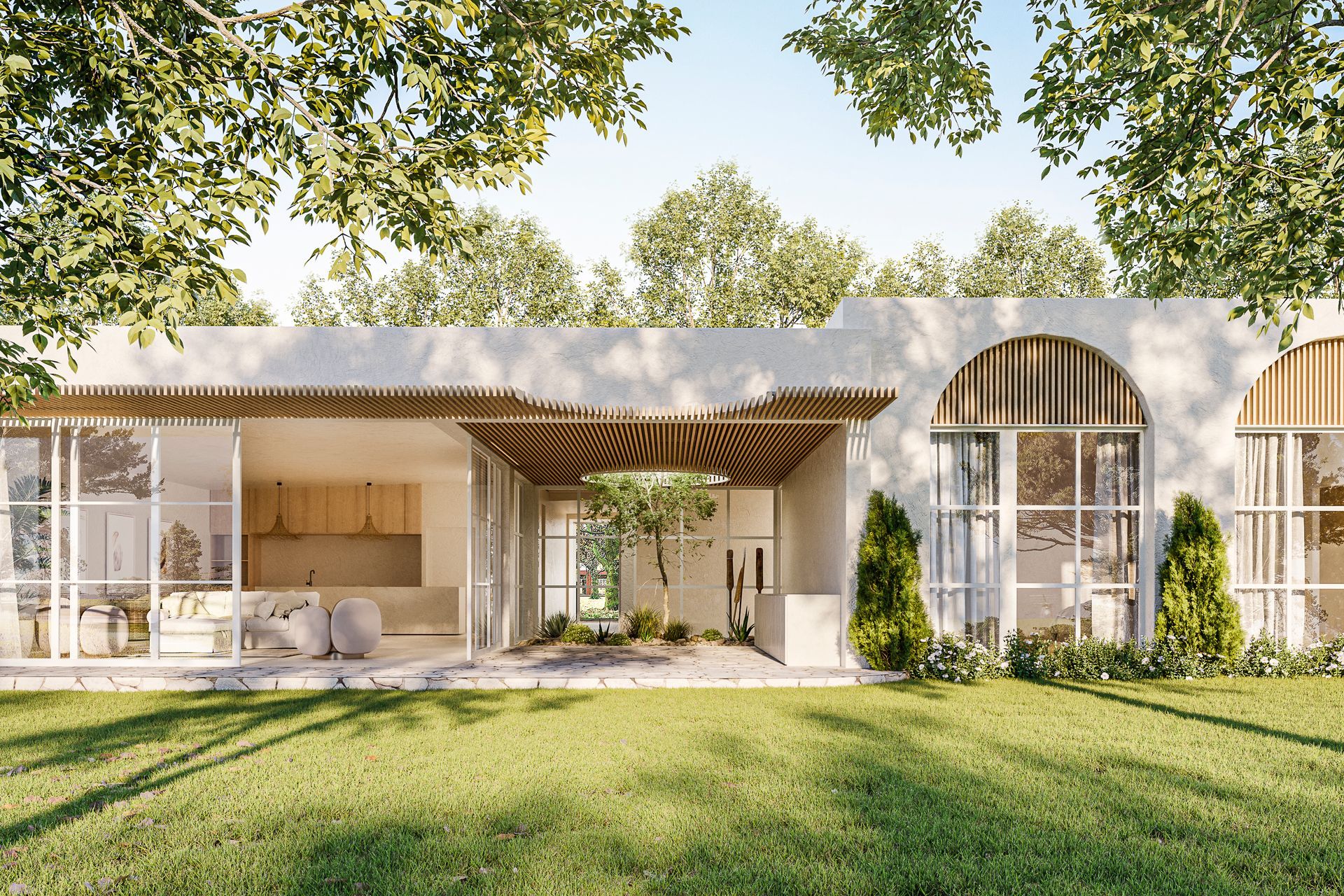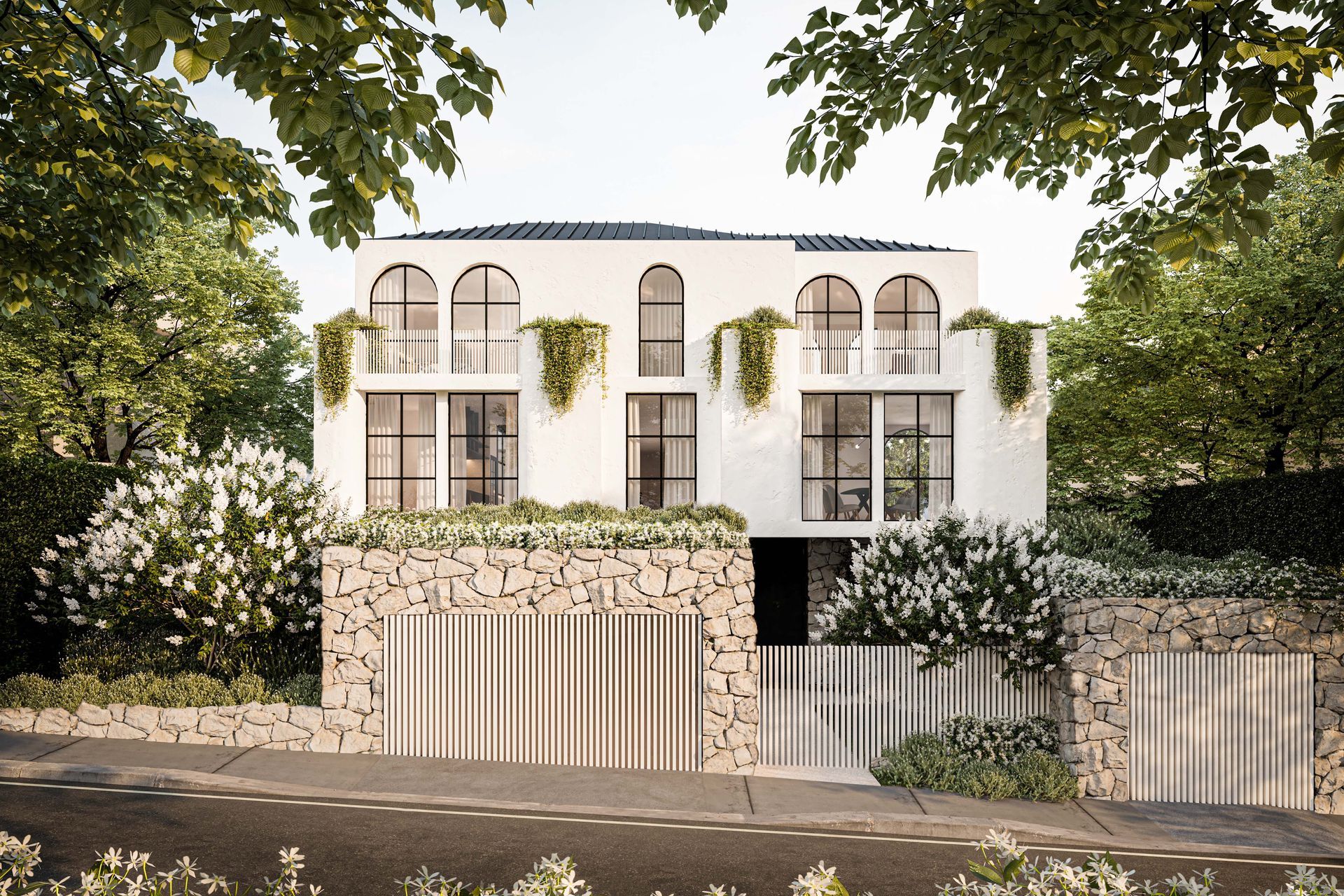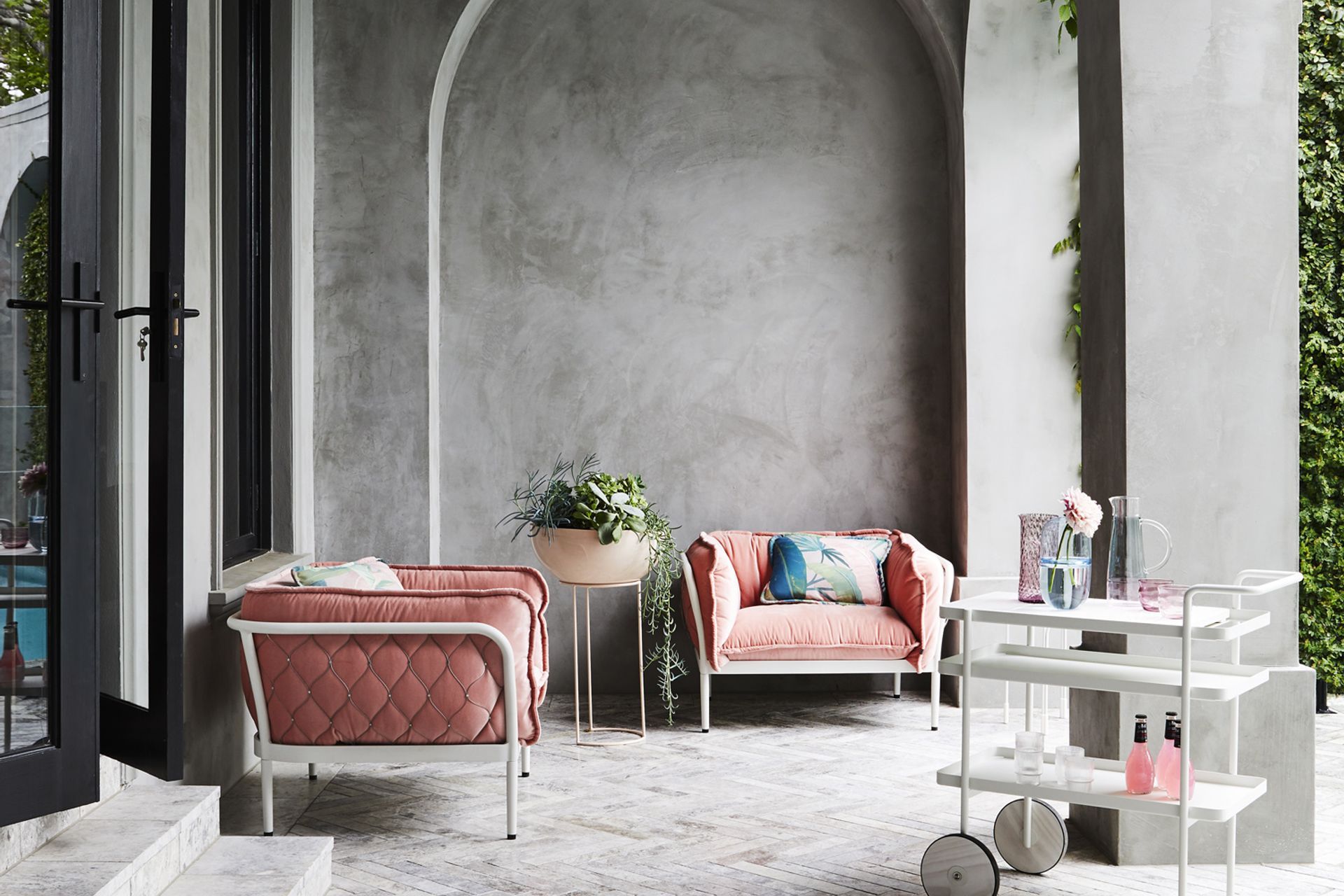Club Med: the hallmarks of contemporary Mediterranean style homes in Australia
Written by
21 March 2022
•
4 min read

Conjuring up images of sun-drenched cities and enviable seaside cities, Mediterranean-style homes have spread far beyond European borders with elegant red-tiled roofs, stucco exteriors, and perfectly symmetrical arches present in some of the best residential and commercial architecture around the world today. While Mediterranean-style homes have become popular in warm locations like California and Florida, which also have strong Spanish influences, hallmarks of Mediterranean architecture are also growing in popularity around Australia, particularly in waterfront locations.
While Mediterranean-style architecture originally drew its inspiration from buildings in Italy, Spain, Portugal, and other countries bordering the Mediterranean sea, as time has passed, Mediterranean architecture has grown to include influences from Greece, France and Morocco. Due to its wide range of cultural influences, Mediterranean architecture is also often referred to as Spanish Colonial, Mediterranean Revival, Mission Revival, Italian Renaissance, and French Colonial.

History of Mediterranean architecture
Much like many early architectural styles, Mediterranean architecture was heavily determined by the materials available at the time and influenced by functional requirements. Early Mediterranean homes were constructed with adobe (a composite material of earth and straw) and finished with stucco, and also utilised clay, for the distinctive red tiles seen on many traditional Mediterranean and Mediterranean Revival homes.
Mediterranean Revival homes as we know them today were made popular by American architects in California and Florida, who felt the laidback design style was an apt fit for both the climate and culture of the two regions. Simultaneously warm and welcoming while exuding a feeling of luxury, Mediterranean Revival homes were embraced by Americans during the 1920s from a desire to reflect the ideals of leisure and wealth through their homes.
While Mediterranean-style architecture is still relatively new to Australia, local architects have steadily adopted key characteristics of the design style over time, imbuing them with their own unique energy and adopting them for the locale.

Characteristics of Mediterranean-style homes in Australia
While traditional Mediterranean architecture has a plethora of hallmarks due to its wide-ranging cultural influences, the Mediterranean-style homes found in Australia tend to have a few key characteristics. Viewing Mediterranean architecture through a contemporary lens, these are the most common design characteristics found in Australian homes.

Curves and archways
Originating from the Italian Renaissance subgenre of Mediterranean architecture, curves and archways feature heavily in Mediterranean style homes in Australia. Clean and crisp, archways in Australian homes are often rendered in white, perfectly complementing both greenery and water views.
Located in Surry Hills, Italianate House by Renato D'Ettorre Architects brings a heritage-listed 1980s property into the contemporary era, while retaining the original style of the building. Rendered in both brick and white stucco (a signature material in Mediterranean architecture), both symmetrical and asymmetrical archways feature heavily throughout this home, serving to open up the residence and create a sense of grandeur.

Similarly, a Kellyville residence by Map Architects proposes a distinctly contemporary take on these Mediterranean-style hallmarks, with symmetrical archways and curved hangings rendered in tones of white and blonde wood, working to let natural light in and complement the lush green surrounds.

Symmetrical façades
Although Australian interpretations of Mediterranean-style homes don’t always adhere to this principle, most Mediterranean homes feature large, symmetrical facades. The front door is generally centered, with large windows on either side and wrought iron gates surrounding the exterior. This Mosman home received a Mediterranean makeover courtesy of Beecraft and features a symmetrical façade with large rectangular windows. Complementing the grey façade and wrought iron gates are green hedges and wall plants, which connect architecture with nature.

For a more traditional take, the textured white façade of Rose Bay by Map Architects takes on a symmetrical appearance with arched windows that let in plenty of natural light.

Lavish outdoor living spaces
Outdoor living spaces are vital to Mediterranean-style homes. Step outside a Mediterranean home and you’ll often be greeted by an expansive courtyard, terrace or patio, allowing entertaining to travel beyond the interior spaces. Bec Judd's Forever Home in Melbourne places entertaining at its forefront, creating a home that’s both classic and contemporary. Simple yet striking in its construction, slate grey concrete meets green spaces in this residence, which features an alfresco dining area that looks out to the pool.

Meanwhile, Warawee by Beecraft features perfectly manicured plantings and a statement feature wall of a scenic mural framed by archways.
Words by Tanisha Angel